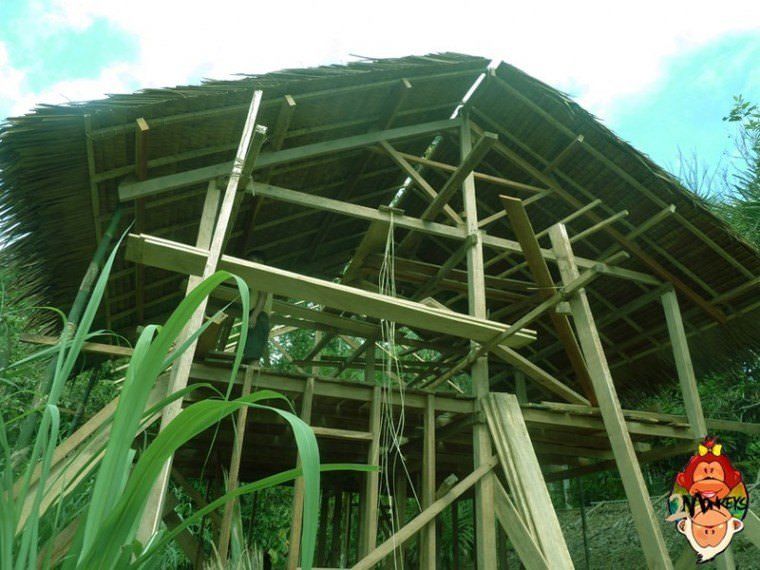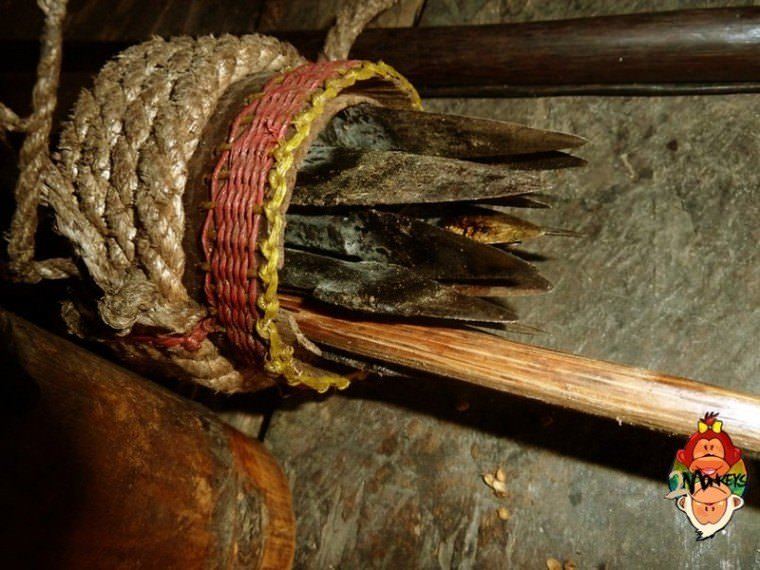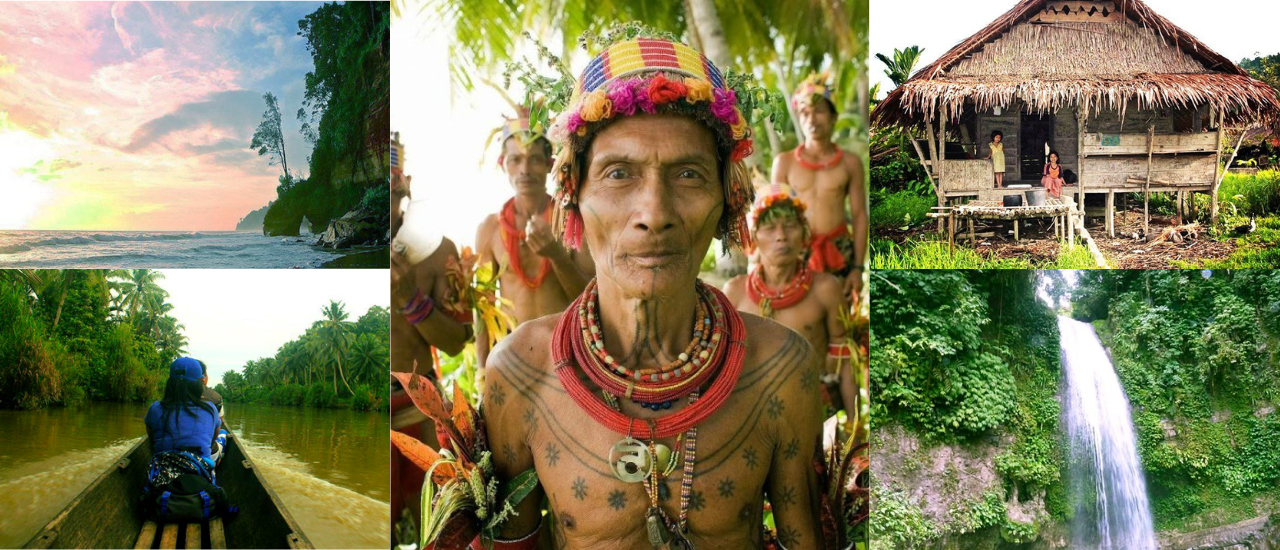Four days of stay in Siberut were one of the longest ‘cultural’ days in my life. Many said that the Island of Siberut is the only remaining real believers and followers of the Mentawai Culture today. That statement alone was an enough reason to explore this community.
Is the Mentawai Culture dying? Well, to see is to believe, as they said. I will better say, to live with it can give you a unique conception. Spending time in Siberut for less than a week was an experience full of inquisitiveness, admiration, and hope.

Other articles you can read:
Curiosity to what Mentawai Culture is all about. What makes it distinctive to other cultures?
Awe to the people who kept this kind of culture. How they did and do that?
Wish to let it be continued and valued. Will this culture still be recognized in the next generation?
A Glimpse of Siberut Island
Demographics: SIBERUT is the home of around 40,000 people as of today, holding the record as the largest island in Mentawai, West Sumatra, Indonesia.

Education: Among Siberut’s populace, most reached only up to senior high school. Availability of schools in the community remains as the top reason why mainly of them were not able to enter University. However, the economic situation also contributes, given that the whole island has a rich agricultural value. Residents often opted to sell their whole land for instant money in paying school fees, instead of making it sustainable through naturally-grown crops.
Related Article: Looking for affordable accommodation? Check out our Ultimate List of Best Hostels in Indonesia.
Heritage: About 60% of Siberut is still covered with tropical rainforest, which shelters a rich biological community that has earned a spot for UNESCO biosphere reserve. The western half of the island is protected as the Siberut National Park. This preserved natural wealth leads to the conclusion that this island alienated itself in the modern world from the city where it belongs, Padang.

Transportation: Natural disasters, which threatened Siberut and its neighboring islands in the Mentawai Cluster, also opened a new access for outsiders. They are tsunami-prone areas that invited various groups to visit the islands and build resiliency among people. This can be one of the reasons why boat trips have been expanded and thus exposed the island for tourists to its compelling perfect spots for surfers and even for trekkers.
Before, there’s only a way to get into the Island from Padang. The local government set up boat trips which can take half up to a whole day. Now, faster trips are available, given the following schedules:

Photo by: Mentawai FastAD
Sikbaluan is another island in Mentawai. From Padang, your boat will stop for about half an hour. It gives time for some passengers to get off and in or just to grab some lunch in the village.
Tickets can be purchased days before your target date of departure or even the day itself in Padang port that is approximately one hour drive from the [Minangkabau International] Airport. I am sure you will secure your place in the boat by buying beforehand, as only chosen days are available for the trip, especially during peak season.
There will be no problem on how will you go from one corner to another of the island as various choices of vehicles are available. Commonly, it is already pre-arranged by the visitors, which are part of the accommodation’s services they opted to stay in.
The day-to-day Indigenous Life
How is it to live for some days in this community?

It was in the middle of the year when I visited Siberut. I came from a three-day food festival in Ubud, Bali and wanted to maximize my allowed 30-day visa free entry in Indonesia. A friend of mine recommended visiting Siberut in Mentawai not to experience the waves (of course, I do not know how to swim!) but to meet a group, advocating the culture and environment of Mentawai. So I came there and witnessed how Mentawai people live every day, normally.
June 9, 2015: After quarter-day of sailing and finally reached the island of Siberut, I liked the all-community-like welcome, which consists of the relatives of my co-passengers, private tour guides, and local drivers.
My arrival was normal. Of course, locals do not see me differently as I have the same physical features until I spoke. It was a big surprise for the people who are with us in the public transportation and found it so funny that someone who looks like them is speaking in English! I guess it was more shocking to them than to see white people.
It was an introductory day. Where to stay? Where to eat? I was accompanied to the modern house because it’s the center where mini markets are there and where the boat stops. Signal was still there but only in some corners and time. Electricity was cut from 10 am up to 4 pm daily.
June 10, 2015: The Preview of the Mentawai Culture.
In Muntei Village, visitors are normally invited to come and gaze what the traditional Mentawai house looks like.

In the center village of Siberut, a model house is built to preserve the Mentawai culture and to remind that this is still being valued despite the coming of a new world in the area. Though people are already adapted in the new clothes, stuff around remained as an indigenous mark. Food proves it. Rice is not their staple food but Sago (flour). It came from the tree and processed as flour and locals cooked it and served as daily food. Sago (tree) reflects a vital role in Mentawai people’s belief as it is the most common sign in their body. Called as ‘Durukat,’ it is usually found from belly button to chess and cheeks. It nearly covers the whole upper body as sago plant signifies life among the locals.


June 11, 2015: Entering one’s home is one of the best ways to know someone. There was one family in the other village, renovating their house and I am lucky to be invited to get in because they thought I am their new neighbor. Yes, again, they thought I am an Indonesian and a native.

Like any other communities near in the forest, people in Siberut can still get free materials but with a limited number only. From roof to wall, they can find the resources around. Men usually get the raw materials and build the house. For women, to stitch the leaves to be used in roofing is their part. It can usually take for two weeks to finish a house, depending on the size and the number of family members who will work. Well, there’s no labor pressure at all as every day, women prepare food and having snacks is the best part as it invites a strong family-tie set up.

June 12, 2015: The Jungle day! The village where the only remaining strong believers of Mentawai culture is called Jungle. From Muntei village (the center), it needed about 6-hour boat trip to that culturally-preserved area, using the smallest boat they have on the island.

Boats are also one of an essential identities of Mentawai people. At their back, ‘Serapak Abak’ is inked. This means balancer of the boat, denoting the symmetry of nature.

After a long boat trip of mostly non-moving, the innocence of the area can highly be felt. The flow of the river, breath of the air and freedom of animals were the perfect scene everyone can think of. Kilometers of walk welcomed me. Motorcycles are available but still needed to walk a lot before we found one. Ways are not anyway fully-constructed so most of the moments; I needed to get down to pass by a certain spot. As more people, I can see around, the closer we got to our destination.

Heading to the place of the tribe’s leader was the goal. It was a fine afternoon. I was introduced to the highest Mentawai advocates and even entered to their traditional home.

In exploring inside their house, there are three significant points for the Mentawai people. First is the collection areas where they hang the skulls of the animals they caught. Locations of those collections do not simply show how much they killed.

As you walk from outside, those hanging skulls you can immediately see are categorized specially as they are killed through hunting. On the other hand, those who are hidden, which placed behind the doorway, are those animals slain from their cages. If there are more animal skulls situated near the cooking area, which is the first part you can see as you enter their house, that family is more skilled and therefore, more respected. The cooking area, placing in the center of the house is another important point. The whole Mentawai home has no division and has no doors. This set up is designed for a more welcoming environment. Mentawai people highly invite everyone to see their pure culture.

The ‘Jaraik’ gets another special spot in a Mentawai house. It means wood engraving that is believed to be an attraction of good spirits and defender of bad ones.

It was a whole new experience not only for me but as well as for them to talk with an Asian who is physically same with them. They were used to white foreigners, and they became comfortable in discussing with them about what a Mentawai Culture is until I came. They were surprisingly enthusiastic about sharing to co-southeast Asian about their rich custom. It gives them an assurance of a diverse interest in Mentawai culture.
Before getting on the boat again for hours of sitting, a refreshing Kulu kubuk Waterfalls experience is the best way to have.

The falls can give you a rejuvenating feeling after a long walk and boat trip, but it will not give you a really neat sense. You need to walk again in a muddy way to get out from the falls, but who cares? Just take a bath as long as you want upon reaching a modern comfort room!
Mentawai as a Culture
“Those who are in business and promoting Mentawai as a surfing gem, they always printed on shirts and to other souvenirs as MENTAWAI ISLANDS. It is wrong; it should be CULTURE.”
A strong articulation from an original Siberut citizen, Joseph Napitupulu. Technically, information all over the web, including Indonesia’s Tourism, provide ‘Mentawai Islands’ and that can’t be wrong. This local vented on how he wants to introduce the Mentawi better and in a deeper meaning to all its visitors. Aside from the common surfing reason why people are coming in their areas, he then pointed that there’s a true and instinctive jewel in the area, and that is the Mentawai People; the Mentawai Culture.

According to the natives’ tales, the discovery of their terrain was because of the Germans who were in search of spices. This is the time where voyagers from Europe are looking for unique spices along with other continents, including Asia. These Germans, nevertheless, were not fully successful on their initial motive and then decided to build hospitals and churches. Presently, missionaries from Germany are still visible in the community, encompassing activities among disaster victims.
Language: With Indonesia’s hundreds of languages, Mentawai people have their own called ‘Nganga.’ Nearly 100% of the inhabitants know how to practice it but as access to their island is getting wider and the call of technology is affecting them, most opted to speak in Bahasa (the national language of Indonesia).
The Belief: In language, that Mentawai feels is still running smoothly but the only tiny percentage of doers and believers of the ‘Arat Sabulungan’ left. Art depicts culture and Sabulungan for Nature. It is locally classified as a religion but not nationally. In Indonesia, there are six ‘official’ religions (Islam, Protestantism, Catholicism, Hinduism, Buddhism, and Confucianism).This system forced the Mentawai people to dress up and choose among the six religions every time they will approach the government.
Tattoo as a Legacy: ‘Tik-tik’ implies ‘immortality’ and the term for a tattoo that plays a vast role to Mentawai people’s belief.

Only accredited members of the tribe are allowed to put ink to someone who wants it. This is also must be arranged ahead of time as Mentawai people are preparing for the rituals. Simply, it is like the biggest celebrations of the world such as wedding and if someone gives birth.
To be a visitor was not a complete hindrance. Specific details might not be completely expressed by the Mentawai people through words, but I knew, and I felt their eagerness to spread this nearly dying culture.

Kach Umandap
Thursday, November 17, 2022 10:52 PM









